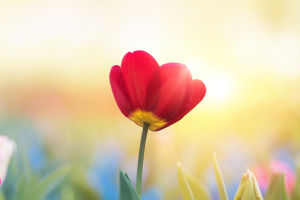Succulent plants have become increasingly popular among gardeners and houseplant enthusiasts due to their unique ability to store water in their leaves, stems, and roots.
This adaptation makes them incredibly resilient and easy to care for, even in the driest conditions.
With their wide range of shapes, sizes, and colors, succulents can be an attractive addition to any indoor or outdoor space. Let's explore some of the most popular types of succulent plants, providing you with the knowledge you need to choose the right ones for your collection.
1. Aloe Vera (Aloe barbadensis miller)
Aloe Vera is one of the most well-known succulents, valued not only for its aesthetic appeal but also for its medicinal properties. The plant's thick, fleshy leaves contain a gel-like substance that is widely used to treat burns, cuts, and skin irritations. Aloe Vera is relatively easy to care for, requiring minimal water and thriving in bright, indirect sunlight. Its rosette shape and serrated leaf edges make it a striking addition to any succulent collection.
2. Echeveria
Echeveria is a genus of succulents known for its rosette-shaped leaves that come in a variety of colors, including green, purple, pink, and blue. These plants are native to Central and South America and are highly adaptable to different environments. Echeverias are popular in container gardens and as part of mixed succulent arrangements. They require well-drained soil and bright, indirect sunlight to thrive. With hundreds of species and cultivars available, Echeveria offers endless possibilities for succulent enthusiasts.
3. Jade Plant (Crassula ovata)
The Jade Plant is a classic succulent that is often grown as a houseplant. It features thick, glossy leaves that are typically dark green but can develop red edges when exposed to enough sunlight. Jade Plants are known for their longevity and can live for decades with proper care. They are also considered to bring good luck and prosperity, making them a popular choice for homes and offices. Jade Plants prefer bright, indirect light and should be watered sparingly, allowing the soil to dry out completely between waterings.
4. Haworthia
Haworthia is a small genus of succulents that are easy to grow and care for, making them perfect for beginners. These plants are characterized by their rosettes of fleshy, pointed leaves, often marked with white stripes, dots, or other patterns. Haworthias are native to South Africa and prefer shaded or partially shaded environments. They thrive in well-drained soil and require minimal watering, making them ideal for indoor settings where light conditions might be less than ideal.
5. Sedum
Sedum, also known as stonecrop, is a diverse genus of succulents that includes both low-growing ground covers and upright varieties. Sedums are known for their fleshy, water-storing leaves and clusters of small, star-shaped flowers that bloom in the summer. These plants are incredibly hardy and can thrive in poor soil conditions, making them perfect for rock gardens, borders, and container arrangements. Sedums prefer full sun and well-drained soil, but they can tolerate partial shade as well.
6. Agave
Agave is a large genus of succulents that includes species ranging from small, ornamental plants to large, dramatic specimens. Agaves are known for their spiky, symmetrical leaves that often have sharp edges or tips. These plants are native to the Americas and are well-adapted to arid environments. Agaves require full sun and well-drained soil, and they are highly drought-tolerant. Some species, like Agave americana, can grow to impressive sizes and make a bold statement in any garden.
7. String of Pearls (Senecio rowleyanus)
String of Pearls is a unique succulent that is easily recognizable by its trailing stems adorned with small, bead-like leaves. This plant is often grown in hanging baskets, where its cascading stems can create a stunning visual effect. String of Pearls prefers bright, indirect light and well-drained soil. It is relatively low-maintenance, but care should be taken not to overwater, as the plant is susceptible to root rot. With its unusual appearance, String of Pearls adds an element of whimsy to any succulent collection.
8. Sempervivum (Hens and Chicks)
Sempervivum, commonly known as Hens and Chicks, is a group of succulents that form rosettes of fleshy leaves. The "hen" is the main rosette, and it produces smaller "chicks" or offsets that grow around it. These plants are incredibly hardy and can tolerate cold temperatures, making them suitable for outdoor gardens in a variety of climates. Sempervivums come in a range of colors, from green to red to purple, and they require full sun and well-drained soil to thrive.
Succulent plants offer an incredible variety of shapes, colors, and sizes, making them a versatile choice for any gardener. Whether you're looking for a low-maintenance houseplant, a striking outdoor specimen, or an unusual addition to your collection, there is a succulent to suit your needs. By understanding the different types of succulent plants and their care requirements, you can enjoy the beauty and resilience of these fascinating plants for years to come.


